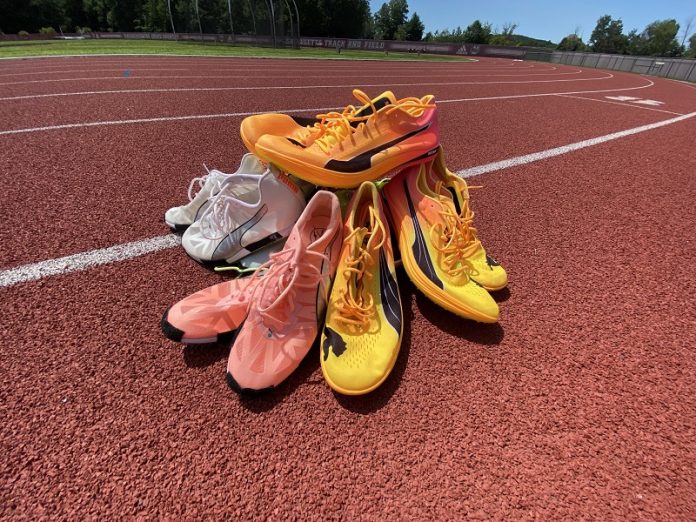
A new study published in the Journal of Sport and Health Science shows that advanced footwear technology, known as “super spikes,” can improve running speed by about 2% in middle-distance track races like the 800- and 1,500-meters.
This research, led by the University of Massachusetts Amherst, sheds light on the impact of these new shoe designs on athletic performance.
Wouter Hoogkamer, an assistant professor of kinesiology at UMass Amherst and senior author of the study, explains that super spikes have become common in elite track events over the past five years.
These shoes feature a thicker, lightweight midsole combined with a carbon-fiber plate that increases both flexibility and support, helping runners move faster.
Many track records have been broken in recent years, and some credit these shoes for the improvement.
However, researchers wanted to scientifically confirm if super spikes actually contribute to faster race times or if other factors, like improved training or track conditions, are responsible.
To find out, Hoogkamer and his team conducted a series of experiments comparing super spikes to traditional lightweight track shoes.
They tested various designs of super spikes and found they improved running speed by 1.8% to 3.1%, with an average boost of around 2%.
Graduate student Ethan Wilkie points out that even small improvements in speed can have a big impact in competitive races.
“In elite track events, the difference between gold and silver can be less than 0.5%. Our findings show that the right shoes can make a significant difference in performance,” he said.
The researchers tested several commercially available super spikes, including the PUMA evoSPEED LD Nitro Elite+ and Nike ZoomX Dragonfly, which both showed a 2% improvement in speed. Another brand showed only a 1% improvement, which was not significantly better than traditional spikes.
While previous studies have shown the benefits of super shoes in marathon running, studying their effects on middle-distance races was more challenging.
Middle-distance races involve a mix of aerobic and anaerobic energy, so traditional methods of measuring performance, like monitoring breathing, were not suitable. Instead, the team developed a new protocol where athletes ran 200-meter intervals at their self-perceived race pace.
The results showed that runners using super spikes took longer steps, rather than moving their legs faster. Over a 1,500-meter race, athletes wearing super spikes took 17 to 21 fewer steps than those in traditional spikes, giving them an edge in speed.
As super spikes continue to evolve, researchers believe that shoe design will play an increasingly important role in breaking records and improving performance at elite levels.
For non-Olympians, this study confirms that better shoes, combined with hard work, can make a real difference in running performance.
If you care about muscle, please read studies about factors that can cause muscle weakness in older people, and scientists find a way to reverse high blood sugar and muscle loss.
For more health information, please see recent studies about an easy, cheap way to maintain muscles, and results showing these vegetables essential for your muscle strength.



